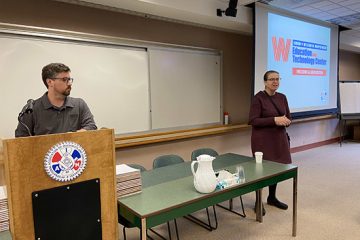By Ivana Saula
Mass unemployment, a slow recovery and debt incurred over the last few months have prompted discussion about Universal Basic Income (UBI). Success of the Canada Emergency Response Benefit (CERB) has been used as a prelude to a conversation about UBI, given how effective it was in assisting thousands of workers who lost their jobs during the pandemic. Missing from this narrative is that many workers were initially excluded, and that CERB was only intended to work as a temporary financial aid program.
CERB was never intended to address poverty, rather to perform a role that a broken, and dismantled EI system could not manage in a crisis. UBI’s objectives, while somewhat similar, are different in intent. Unfortunately, ongoing public debate blurs the distinction between different policy tools, such as emergency financial programs, and those that aim to address social and systemic issues, like poverty.
The spin on basic income is overwhelmingly positive, but important considerations are being ignored. Very little attention has been given to objectives UBI aims to reach; is it to supplement inadequate wages, reform EI, eradicate poverty, even the playing field for the working poor, and those living in cyclical poverty?
It may surprise you that UBI is not a new concept. It was first put into practice in 1795 to help agricultural workers amidst a crisis. The program was costed on the price of bread and adjusted for family size. The policy ended up hurting those it was intended to help, resulting in the Poor Laws and establishment of workhouses.[1] Since then, every other pilot and attempt at universal basic income was a failure, if measured by who ends up paying for such a program, how and whether those it’s meant to help are better off.
Fast forward to 2021, and we are faced with the same dilemma and a crisis. Decisions about who would pay for UBI and how much will be hotly debated. There’s already been discussion over costs to the middle class if such a program was put into action. If it’s the middle class that’s on the hook, policy makers should not ignore that wages have been declining, while costs of living have been rising disproportionately, and that an average Canadian is $ 200 away from insolvency. If that’s the solution, then even more people would slide into poverty.
Bringing all those living in adverse poverty to the poverty line would cost $ 32 billion[2], which merely means that people living in abject poverty would live marginally better. But, what could an investment of $ 32 billion achieve?
The Centre for Policy Alternatives estimated that a $ 32 billion investment would make the following possible; pharmacare, improved water and wastewater systems, new sustainable infrastructure (including housing retrofits and public transit, elimination of tuition fees, new housing and housing benefits, child care, mental health care, and the elimination of interest on student debt.
All of these would improve the lives of not just the poor, but for everyone. Above all, in expanding availability of resources, and improving access, we can use resources collectively in ways that that strengthen our families and communities. Likewise, we can build a stronger movement when workers are able to exercise their agency, build workplace democracy, fairness and justice on the job and the political sphere.
As we’re likely to see more debate on this topic, we should ensure that we’re informed, and educated about all policy options, including a policy premised on job guarantees, and creation of jobs that are fairly compensated, fulfilling, and safe. We should also ask for fair taxation policies, where everyone pays their fair share, rather than the shrinking and struggling working class bearing the brunt.
And a philosophical question remains, are we better off when we have more money or when we need less money? How and where we divert public money at this critical time, will impact generations of Canadians.
The pandemic has given us an opportunity to re-evaluate the status quo; let’s not repeat mistakes of the past.
[1] For more information, read more on the Speedhamland System.
[2] Yalnizan, Armine.
———————-
This article was originally posted on the IAM Canada website. View the original post here: Universal Basic Income: A Help or Hindrance for Workers?


